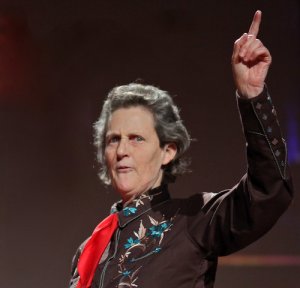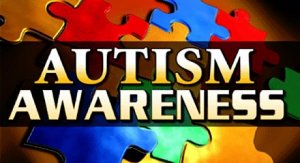The media is known for it’s controversial takes on different populations, whether it be race, sexuality, or gender to name a few. Another group of people that are affected by the media are those with disabilities. Autism, or ASD, is a diagnosis that is widely known, and one that is becoming included in television and movies more frequently.
Examples of recent shows and movies with autistic characters include:
- Atypical
- Criminal Minds
- The Good Doctor
- Young Sheldon
- Everything’s Gonna Be Okay
- X+Y
- Please Stand By
- Rain Man
The video above describes multiple of the most well known characters with autism. However, many of these characters are based on the stereotypes associated with the diagnosis. While some representations may have realistic features, many others are not as accurate. Here, we will look at some of the biggest misconceptions.
Myth: Autism looks the same for everyone
Fact: Autism itself is defined as a developmental disorder of varying severity, meaning the way it is presented is unique to the individual.
When autistic characters are included in television shows and movies, they often look very similar to each other. The stereotypical autistic character in the media is depicted as being a white male, often with an academic appearance (Belcher, 2014). These characters are often uncaring of social norms and acceptance, while also being depicted as a savant in at least one area. Examples include Dr. Spencer Reid from Criminal Minds, Dr. Shaun Murphy from The Good Doctor, and Sam Gardner from Atypical.
In the video below, Ella, an advocate for special needs awareness that is autistic herself, describes how it feels to view these characters that are almost nothing like herself. While white, she is a female, and describes herself as someone with a desire to fit in while not possessing any amazing skills or being overly academic. Ella is almost the exact opposite of the stereotypical autistic character, and stated that she finds it hard to find characters that she can relate to.
However, Ella does mention two characters that she considers a good representation. These characters are Elsa from Atypical, who is described as a clearly autistic character, but is undiagnosed, and Jane from the movie Jane Wants A Boyfriend. Both are fun, female characters, and are seen trying to manage social relationships, self-esteem, and everyday life. They provide a more realistic representation of what living with autism looks like for some people, including Ella.
Myth: Everyone that is autistic is a savant.
Truth: Savant syndrome has only been reported in up to 37% of those with autism (Hughes, 2018).
In relation to autism, a savant is described by the Miriam-Webster dictionary as being “someone with a mental disability that exhibits exceptional skill or brilliance in some limited field”, for example, art, music, or mathematics. Characters Spencer Reid and Shaun Murphy are popular examples of savants. Both doctors, the men have high IQs and eidetic memories, which allows them to accurately analyze and memorize information. However, cases of savant syndrome are not nearly as common as it appears in the media.
In the video below, Loren Snow, an autistic public speaker and advocate, discusses how the media often portrays the “extremes” of autism. This includes depicting those with autism as having either a very low or high IQ, such as the doctors mentioned above, as well as either being extremely capable, or requiring assistance. Loren explains that media companies choose to do this, because these extremes are what interests the audience. However, in reality, people with autism can be anywhere within those extremes.
Myth: Autistic characters in the media are the most realistic representation of autism.
Truth: Documentaries are the most realistic form of autism in the media.

By: Steve Jurvetson
In more cases than not, autistic characters are shown as verbal and high functioning. However, while many autistic people do fall into those categories, many others do not and struggle in those areas. Media often uses these characters in dramatized storylines to make the plot more interesting, even if it makes it less accurate. For more accurate representations, biographical film such as Temple Grandin, who is an autistic advocate and public speaker, or documentaries such as Life, Animated and The Reason I Jump. This is due to real people being filmed real life, rather than following a script. However, it is mentioned that this is still not 100% accurate. As said in one article on the subject, “It is impossible for one piece of media to include portrayals of every single manifestation of ASD; however, it is not impossible to endeavor to show as many different types of characters as possible, especially in a realistic manner” (Prochnow, 2014). So while there is no perfect way to represent the entire population, there are ways to represent as many as possible in a accurate way.
Overall effect of autism in the media:
While the media does not portray those with autism in a negative way, it has been widely agreed on that the representation is not the best, and could definitely be improved upon. For a time, it was a concern that inaccurate representation of the diagnosis would increase the stigma surrounding autism, and lead to viewers thinking of it negatively. However, this theory was disproven following a study in which students were asked to watch the pilot of The Good Doctor. Following this, they were asked to look at a list of traits, and choose which they would
associate with autism. The majority of students that watched the pilot episode ended up associating more positive traits to the diagnosis, and even shared that they would be interested in learning more about autism in general (Stern, 2019).
It wasn’t too long ago that people with disabilities weren’t represented in the media at all. Now, while the representation itself can be improved, it is still considered progressive that more and more characters are being written to fit this population. It is the hope that, over time and with input from people living with autism, the media will be able to more accurately write these characters in ways that real individuals will be able to relate to.
References
Belcher, C. & Maich, K. (2014). Autism spectrum disorder in popular media: stories reflections of societal views. Brock Education: A Journal of Educational Research and Practice, 23(2), 97-115. https://eric.ed.gov/?id=EJ1057529
Hughes, J., Ward, J., Gruffydd, E., Baron-Cohen, S., Smith, P., Allison, C., & Simner, J. (2018). Savant syndrome has a distinct psychological profile in autism. Molecular Autism, 9(53), 1-18
Poe, P., & Moseley, M. (2016). “She’s a little different”: autism spectrum disorders in prime-time tv dramas. ETC: A Review of General Semantics, 73(4), 291-313. https://web-s-ebscohost-com.ezproxy.neit.edu/ehost/pdfviewer/pdfviewer?vid=16&sid=92b7c147-b10b-42a3-8a0b-ee97e6a7d737%40redis
Prochnow, A. (2014). An analysis of autism through media representation. Institute of General Semantics Inc., 71(2), 133-149. https://web-s-ebscohost-com.ezproxy.neit.edu/ehost/pdfviewer/pdfviewer?vid=8&sid=92b7c147-b10b-42a3-8a0b-ee97e6a7d737%40redis
Stern, S., & Barnes, J. (2019). Brief report: does watching the good doctor affect knowledge of and attitudes toward autism? Journal of Autism & Developmental Disorders, 49(6), 2581-2588. https://web-s-ebscohost-com.ezproxy.neit.edu/ehost/pdfviewer/pdfviewer?vid=18&sid=92b7c147-b10b-42a3-8a0b-ee97e6a7d737%40redis




I agree that you mentioned autism appears differently in everyone and that is so true. There are many times characters in TV shows that have autism appear based on stereotypes. Representation of those with autism has increased and like you mentioned is not negative but could be improved. Throughout the blog you mentioned many myths in the media about autism and I agree. The media information is not alway accurate, the media is spreading false information about autism.
I love your blog! I work exclusively with children on the autism spectrum and one of my favorite sayings is “when you meet one person with autism, you’ve met ONE person with autism”. Autism’s prevalence is constantly rising and no two presentations of the disorder are the same. Autism also doesn’t discriminate. My own students range in age, gender, race, ethnicity, socioeconomic status and your first myth speaks to portrayal in the media as white, nerdy looking men. I also have run into the myth about all people with autism being a savant and that is simply not true. I enjoyed your blog and its content. The layout and the flow of the writing was easy to read and follow.
Hello!
I really enjoyed reading your blog, it was such an interesting topic to think about. After reading your blog, I also believe that the way the media represents autism can definitely be improved upon. I feel that if they are going to have a show with a certain diagnosis, they should do more research to better represent it. I think that the media cares more about the money then the way they portray a diagnosis, which is sad. Although it has improved, I hope that in the near future the media will be able accurately represent these characters in ways that our population will be able to relate to.
Great post!!
Hi!
I enjoyed your blog very much! I’m so glad you chose this topic. Media representation of autistic persons is something that bothers me immensely. Thank you for putting it into words! Media tends to perpetuate an extremely narrow perspective on autism and the vast spectrum that exists. I agree that we need to highlight real people with real experiences as we move forward with greater inclusivity.
Hello!
This was a great blog post about autism and I do agree that their are many myths regarding individuals with autism. The media does need to improve as treating these individuals with respect instead of just worrying about the money. You did an awesome job speaking up for them and the blog was easy to read and the flow was very organized.